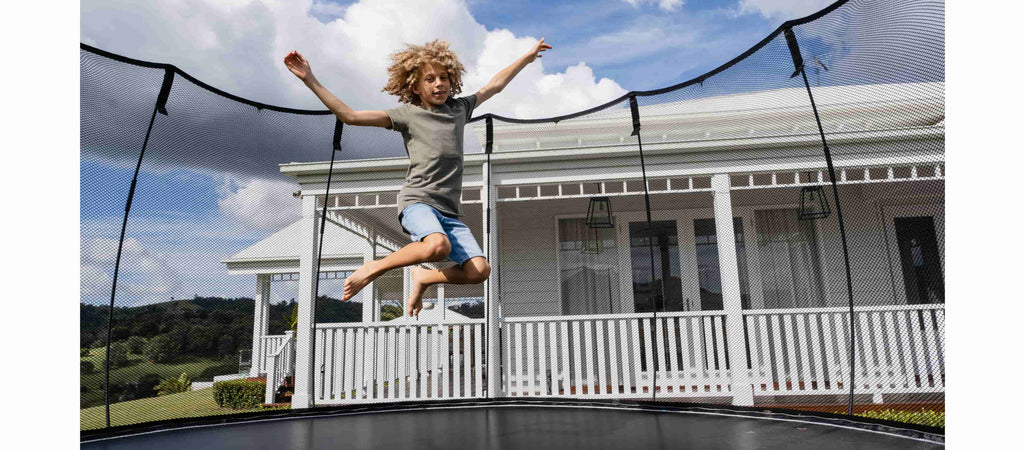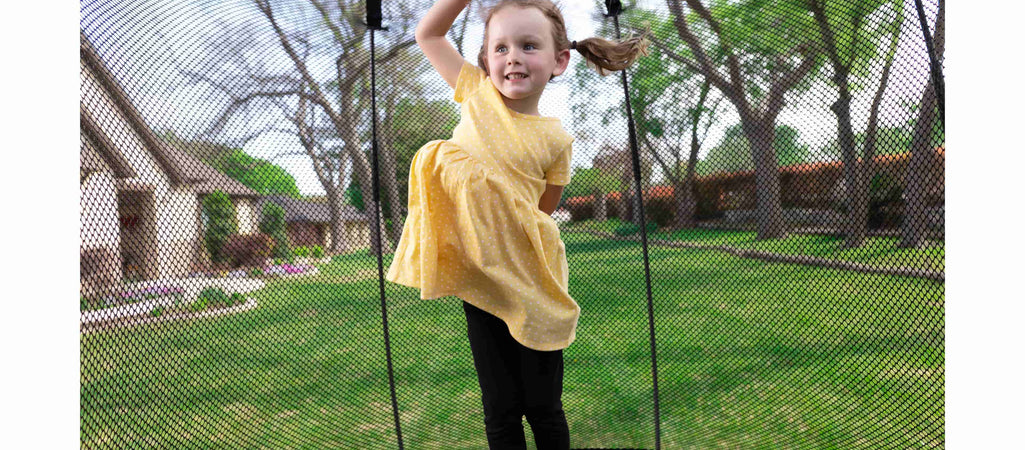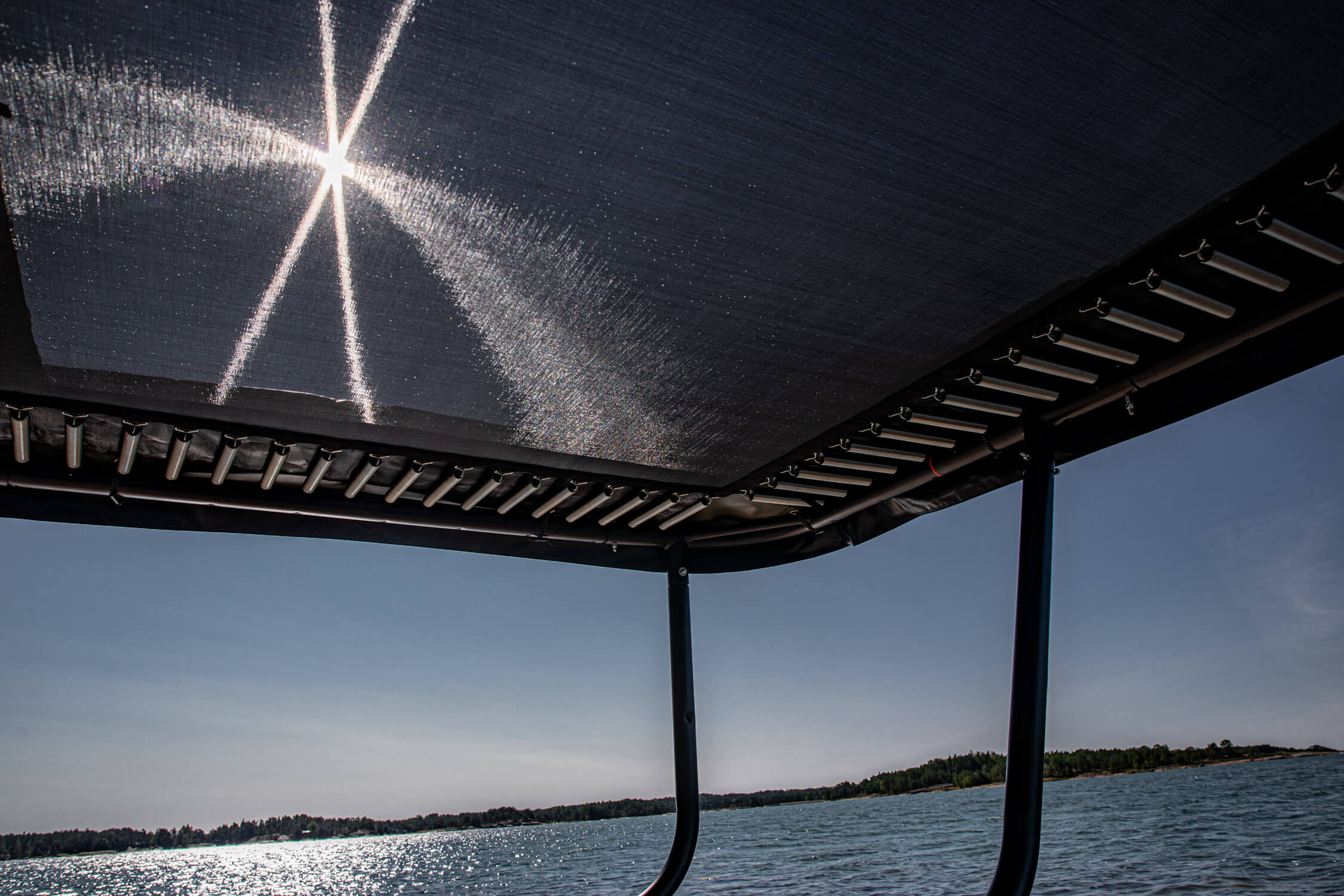A trampoline typically lasts between 3 to 8 years. Its lifespan depends on use, maintenance, and weather exposure.
Trampolines are a fixture in many backyards and provide families with hours of entertainment and physical activity. The longevity of your trampoline hinges on various factors, from the quality of materials used in its construction to the frequency and intensity of its use.
Regular maintenance, including inspecting springs, mats, and net enclosures, can help extend its life. Weather elements like UV rays, rain, and snow can degrade the trampoline’s components over time, so investing in a weather-resistant model or using a protective cover can be crucial. Ensuring that your trampoline is well-cared for, with repairs and replacements made as needed, will maximize its safe usability and make it a durable addition to your outdoor recreation.

Credit: www.springfreetrampoline.com
Lifespan Of A Trampoline
A trampoline brings endless enjoyment and exercise to people of all ages. But exactly how long can this fun last? The lifespan of a trampoline depends on various factors. This includes how well it’s made, and how it’s cared for. Let’s bounce into what affects a trampoline’s durability and what you can typically expect in terms of years of use.
Factors That Affect Durability
Different elements can make a trampoline last longer, or shorten its life:
- Material Quality: High-quality materials can stand up to wear and tear better.
- Weather Exposure: Rain, sun, and snow can weaken a trampoline over time.
- Usage: More bouncing means more stress on the trampoline.
- Maintenance: Regular checks and repairs help it last longer.
- Weight Limit: Sticking to the weight limit prevents overstraining the springs and mat.
Average Lifespan Expectations
So, what’s the average life of a trampoline? While it varies, here’s a succinct snapshot:
| Component | Average Lifespan |
|---|---|
| Frame | 3-8 years |
| Mat | 2-6 years |
| Spring | 1-5 years |
| Safety Net & Pads | 1-5 years |
For the best experience, ensure proper setup, follow maintenance guidelines, and replace parts as needed to enjoy your trampoline to the fullest!

Credit: www.springfreetrampoline.com
Material And Craftsmanship
When judging a trampoline’s lifespan, both material and craftsmanship play key roles. The right materials combined with expert assembly mean years of high-flying fun. Let’s break down what makes a trampoline stand the test of time.
Quality Of The Frame
The frame is a trampoline’s backbone. A high-quality frame ensures stability and longevity. Frames made from galvanized steel resist rust and can weather the elements. A thicker gauge steel adds to durability. Joints and welds should appear even and strong. This provides a steady foundation for years of use.
Spring Resilience
Bounce quality depends on spring resilience. Stainless steel springs offer superior elasticity and are rust-resistant. Spring count and length also affect the bounce. A higher count of longer springs gives a smoother, more enjoyable bounce. With proper care, resilient springs maintain their tension over time, ensuring a consistent bouncing experience.
Mat And Netting Materials
The mat and netting withstand constant stress. UV-resistant polypropylene mats endure under sun exposure. A tightly woven mat provides a safe bouncing surface. Nets should be made of durable, synthetic material such as polyester. This material resists tearing and can take repeated impact without fraying. Proper stitching and robust attachment points are vital for these components.
| Component | Material | Durability Feature |
|---|---|---|
| Frame | Galvanized Steel | Rust-resistant, Strong |
| Spring | Stainless Steel | High tension, Long-lasting |
| Mat | Polypropylene | UV-resistant, Durable |
| Netting | Polyester | Tear-resistant, Strong |
- Inspect regularly for signs of wear and tear.
- Clean your trampoline often to maintain its condition.
- Replace parts as needed to prolong the life of your trampoline.
Environmental Impact
The longevity of a trampoline can significantly affect the environment. Durable trampolines reduce waste and the need for frequent replacements. Let’s explore how environmental factors influence the lifespan of a trampoline and what you can do to extend it.
Weather And Outdoor Conditions
Trampolines face harsh elements year-round. Sun, rain, and snow can wear down materials. Consider these points:
- UV rays can weaken and fade the jump mat and padding.
- Moisture from rain or snow can cause rust and weaken the frame.
- Wind can flip trampolines, causing damage.
Maintain ground anchors to prevent wind damage. Regularly check for rust and apply protective sprays to combat weather effects.
Proper Storing Techniques
Good storage practices prolong your trampoline’s life and protect the environment. Steps to consider:
- During harsh weather, dismantle the trampoline.
- Store the jump mat and padding indoors to prevent degradation.
- Coat the frame with a rust-protectant before storing.
By following these methods, trampolines can last for years, minimizing environmental impact from waste.
Maintenance Tips
Trampolines bring endless fun and a great source of exercise. Yet, their lifespan greatly depends on how well they’re maintained. Keeping your trampoline in top condition means you can enjoy it for many years. Follow these maintenance tips to ensure longevity.
Maintaining your trampoline properly can enhance its performance and safety. Let’s delve into the key maintenance actions you should regularly perform.
Regular Cleaning Procedures
Clean regularly to prevent dirt buildup. Here’s how:
- Remove leaves and debris.
- Wash with soap and water.
- Dry before use to avoid slips.
Replacing Worn Parts
Inspect each part and replace if needed:
| Part | Signs of Wear | Action |
|---|---|---|
| Mat | Tears or frays | Replace immediately |
| Spring | Rust or stretch | Replace with exact match |
| Net | Holes or rips | Source quality replacement |
| Poles | Bent or damaged | Seek sturdy replacements |
Inspection Frequencies
Regular inspections prevent accidents. Note the schedule:
- Before each use, check for sharp edges or protrusions.
- Weekly, examine for loose components.
- Monthly, scrutinize for tear and wear.
- Seasonally, take a deeper look for any weather damage.
Warning Signs Of Wear
Trampolines offer endless fun and great exercise. But like any outdoor equipment, they don’t last forever. Knowing the warning signs of wear can help maintain safety and prolong the life of your trampoline.
Visual Inspection Points
Conduct regular checks for these visual cues to catch trampoline wear and tear early:
- Rust or corrosion on the frame or springs.
- Cracks or bends in the frame.
- Fraying or tears in the jumping mat.
- Worn or loose stitching on the mat edges or spring cover.
- Missing or faulty spring connections.
- Brittle or damaged safety netting.
- Deterioration of the spring cover padding.
Safety Measures And Checks
Stay on top of safety with these crucial checks:
- Ensure all springs and bolts are tight and intact.
- Perform spring elasticity tests by gently pressing down.
- Check for stability in the frame when in use.
- Ensure the jumping mat tension is safe and even.
- Test safety nets and pads for secure and proper coverage.
- Check that all warning labels are visible and legible.
- Audit weight limits to avoid overloading.
A trampoline should offer secure fun. Any signs of damage demand immediate attention to keep every bounce safe!

Credit: us.acon24.com
Making The Decision To Replace
Making the decision to replace a trampoline can be a mix of safety concerns and seeking fresh excitement. Trampolines bring joy and exercise to family life, but over time, they age. Understanding when to invest in a new trampoline ensures endless fun while maintaining safety.
When To Consider A New Trampoline
Signs that it’s time for a new trampoline include:
- Frequent repairs: More patches than jumps means it’s time.
- Worn-out mat: A saggy, torn mat cuts the bounce and fun.
- Rusted springs: Rusty springs can break, risking injury.
- Unstable frame: Wobbles and creaks suggest a safety hazard.
Don’t wait for an accident. A new trampoline means renewed peace of mind.
Disposal Of Old Equipment
Getting rid of an old trampoline should be responsible.
- Recycle: Parts like metal and springs are recyclable.
- Donate: If still safe, schools or charities might accept.
- Dispose: Contact local waste management for large items.
Make space for the new, and recycle where possible. A safe play space awaits!
Frequently Asked Questions Of How Long Does A Trampoline Last
What Influences Trampoline Lifespan?
Several factors influence a trampoline’s lifespan, including material quality, usage frequency, weather conditions, and maintenance. High-quality materials and regular care can extend its life.
How Often Should A Trampoline Be Replaced?
Trampolines typically last 3 to 8 years. Replace them when you notice signs of wear like rust, tears in the mat, or damaged springs, ensuring safety and optimal performance.
Do Weather Conditions Affect Trampoline Durability?
Yes, weather conditions significantly affect durability. Exposure to sun, rain, and snow can deteriorate materials. Using weather covers and storing during severe weather can help protect trampolines.
Can Maintenance Extend A Trampoline’s Life?
Proper maintenance, such as regular cleaning, checking for damage, and following manufacturer’s guidelines, can greatly extend a trampoline’s lifespan and ensure safety.
Conclusion
Wrapping up, trampoline durability varies based on several factors. Expect between 3-8 years of bouncy joy, contingent on maintenance, usage, and quality. Prioritize proper care and opt for high-caliber models to maximize your investment. Spring into action and enjoy timeless outdoor fun with your family!


